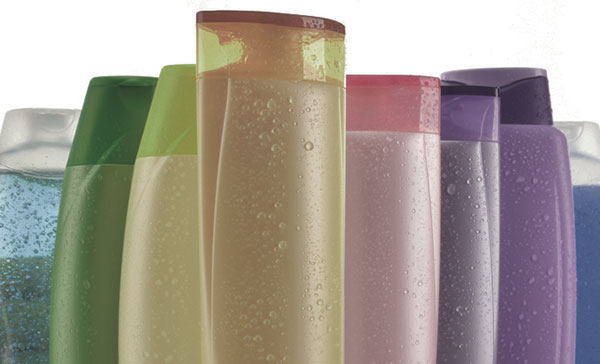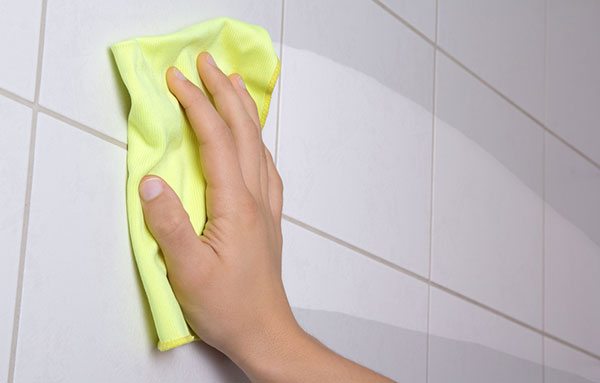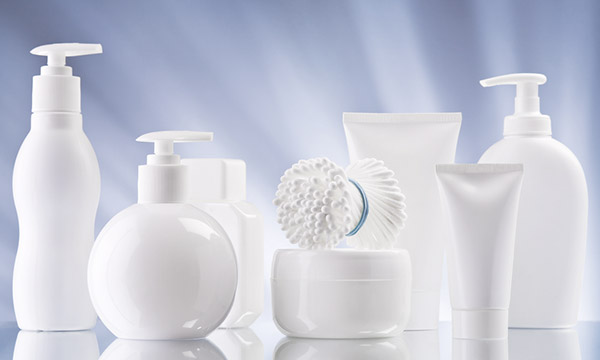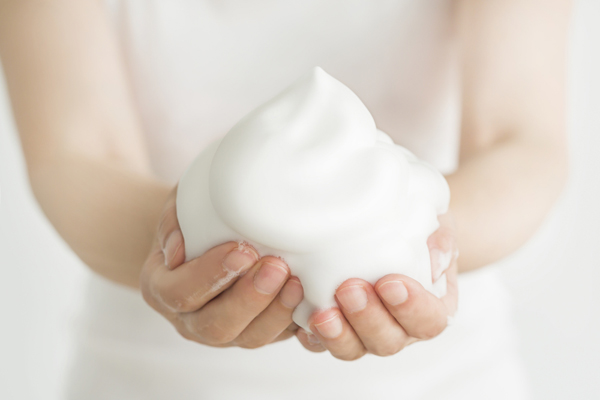Recently I published an excellent guest post from Malcolm Rands, co-founder of ecostore (my lovely blog sponsor!). Malcolm’s post highlighted 4 ways to reduce exposure to nasty chemicals and included one point which I wanted to expand on today. As Malcolm noted:
Many of the chemicals used in the products we buy every day for clean ourselves and our homes aren’t proven to be safe for our health. An important part of being healthy is checking what’s in these products and avoiding anything that might be harmful to our endocrine system, might irritate our skin and lungs, or worsen conditions like asthma.
Being aware of chemicals that are detrimental to your health is the first step towards reducing the toxins in your home. The Environmental Working Group (EWG) website is a great resource you can use to help increase you awareness of chemicals to avoid. EWG is a non-profit, non-partisan organisation dedicated to protecting human health and the environment. It has extensive information on consumer products, food, water toxins and much more. Key pages to visit if you are interested in this topic are:
- Decoding the Labels – lists terms you will see on products you buy and what they mean.
- EWG’s guide to healthy cleaning – you can enter the name of the cleaner you use and if it is in the 2000+ database it will provide you with a rating for the cleaner, a list of known ingredients it contains and highlight concerns with the product.
- Skindeep database – just like with the cleaner database you can enter a health and beauty product you use and read a rating for the product, a list of known ingredients it contains and highlight concerns with the product.
- Consumer guides – EWG has a useful range of PDF reports you can download like Dirty dozen endocrine disruptors, Children’s cereals and EWG’s shopper’s guide to pesticides in produce.
The ecostore blog also has helpful information breaking down what some of the common chemicals used in cleaning and body products and what they can do to your body. Here are five nasty chemicals to look for on the products you buy.
Propylene glycol

What is it – Propylene glycol has no colour, taste or scent. It’s used to stabilise fluids that aren’t soluble, to bind together other substances and to draw and hold moisture, preventing evaporation.
What is it found in – Personal care products, like bath and shower gel, deodorant, makeup, moisturiser, sunscreen, shampoo and conditioner, perfume and toothpaste. It’s also found in some baby wipes.
What does it do – Environmental Working Group is concerned by some potentially harmful health effects, including an association with skin irritation and allergic contact dermatitis, and toxicity to organs and the immune system. Skin sensitisation effects can be evident even at low concentrations of propylene glycol, it says.
Read more – Nasty chemical of the month: Propylene glycol
Bleach (sodium hypochlorite)

What is it – The chemical name for bleach is sodium hypochlorite, a chemical used as a whitening agent. It’s an oxidising bleach, which works by lightening or removing colour.
What is it found in – bathroom cleaning products.
What does it do – The Environmental Working Group raises concerns about sodium hypochlorite’s potential to provoke asthma, to be toxic to our developmental and reproductive systems, and to be a possible carcinogen. Sodium Hypochlorite can also form chlorinated volatile organic compounds, which are greenhouse gases and possible carcinogens.
Read more – Nasty chemical of the month: bleach (sodium hypochlorite)
Polyethylene glycols

What is it – Polyethylene glycols can be used as surfactants, which let detergents spread and wet, allows dyes to get into material and helps perfumes and toothpaste disperse evenly. They’re also used to condition skin and act as emulsifiers.
What is it found in – Polyethylene glycols (PEGs) are found in a range of commonly-used products like makeup, skincreams, sunscreen lotion, toothpaste, baby products and flowing hand soap.
What does it do – PEGs because they have links to a number of health concerns. Among these are potential eye and skin irritation. In addition, a safety assessment on alkyl PEGs used in cosmetics labelled the starting materials used to make PEGs as carcinogenic, and there is a possibility that raw PEGs are contaminated with 1,4-dioxane, another potential carcinogen.
Read more – Nasty chemical of the month: Polyethylene glycols
Phthalates

What is it – Phthalates (pronounced thay-lates) are a class of chemicals that are also known as phthalate esters or esters of phthalic acid. They are often used as plasticizers (substances added to plastics to make them more flexible, durable and longer-lasting) and are commonly used in plastics, clothing, cosmetics, perfumes and children’s toys.
What is it found in – they are used as plasticizers in products such as nail polishes (to reduce cracking by making them less brittle) and hair sprays (to help avoid stiffness by allowing them to form a flexible film on the hair) and as solvents and perfume fixatives in various other products.
What does it do – Phthalates are known endocrine disruptors, which means they affect hormones within the body. They’re particularly risky for pregnant women, as phthalates are also known to cross the placenta.
Read more – Nasty chemical of the month: Phthalates
Cocamide DEA

What is it – Cocamide DEA is an ingredient used in many personal care products to enhance and stabilise foam formation.
What is it found in – It is found in a range of household products including shampoos, soaps, bubble baths and other body care products.
What does it do – It is a skin eye and respiratory tract irritant and is classified as ‘possibly carcinogenic to humans’ by the IARC (International Agency for Research on Cancer).
Read more – Nasty chemical of the month: Cocamide DEA
I still have a way to go before my home is free of all these chemicals, but it has improved greatly over the last couple of years. Increasing my knowledge on the topic has been important. My cleaning products and base beauty products are good, but I need to find alternatives to things like hair spray, nail polish, deodorant, toothpaste etc.

